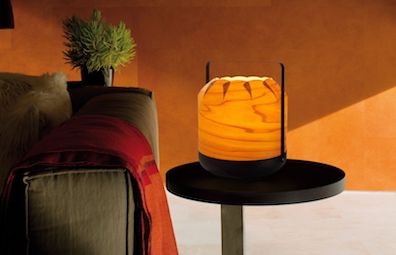Grassa Toro and LZF met when he was commissioned by Isidro Ferrer to write the character descriptions for each of the Funny Farm animals. This collaboration led Grassa to become part of the LZF LAB team involved in the creation and writing of the Telling Tales campaign. His stories in the campaign bring life to the photography, almost as if it was a graphic novel. Naturally, it became clear that his involvement would be vital in the creation of the LZF Lifestyle Magazine Nº3.
Thanks to his writings, he has brought a sensitivity and humor to the magazine which has made it unique in the series so far. Now coinciding with the release of Grassa Toro’s new web, we would like to bring you his interview with himself, as published in the LZF Magazine Nº 3.
So, you are the author of the stories in LZF’s Telling Tales. How did the figure of the narrator that tells us the stories arise?
It is a female narrator, a woman. She arose out of the memory of a routine action that I have repeated ever since I was a child: to look out of a window and see what is happening in the building across the road. I’m sure you have looked too.
I don’t remember having done that.
It is fantastic: night falls, people come back home, they start turning on the lamps in the living room, the kitchen, the bedroom, occasionally someone dashes across the window frame, the French doors out on to the balcony…
You are telling me you are a voyeur?
Yes and no. In fact, one hardly sees anything at all, the apparitions of the neighbors are fleeting images that are far away, almost out of focus, flickers of life. What is fantastic is not what you see, but rather when I imagine everything I’m not seeing.
You could imagine the same things sitting on a chair in front of your computer.
Possibly, but I’d be missing the show of life that presents itself like a huge stage where all the lights are on; the fact that it’s artificial lighting is crucial; this exercise is not as attractive in daylight.
What does the narrator of Telling Tales see from her building?
She sees very little, and imagines a lot. She imagines what she needs to feel alive: that love exists, that desire
exists, that solitude exists, that life is a battle between love and solitude.
We do not know what her name is, we don’t even know what she’s like or how old she is.
Her name is your name and she’s your age; her name is my name and she’s my age.
You are writer. What do you need to have in order to become one?
An eye for imagination, or even better, two.
And that’s it?
And a hand to bring order to the chaos, or two hands, even better.
You sign the texts in this publication, the articles, the interviews, the notes. Does this mean you are interviewing yourself?
Indeed.
Is that possible?
In literature everything is possible.
One last question: which of the two is the real Grassa Toro, the interviewer or the interviewee?
Both, of course. Neither of them, obviously.
Grassa Toro was born in Zaragoza, the European city, in 1963. He has written and writes plays, essays, stories, conferences, chronicles, comics, the occasional poem, the odd song. Children and adults read books of his with titles like: Hombres contados, Cuaderno de vacaciones, Une femme et un homme, Conquistadores en el Nuevo Mundo, Fábulas morales de una vez para siempre, Una casa para el abuelo. He has lived in France and in Colombia; he now lives in Chodes, Spain, in La CALA; a house devoted to artistic research and creation.
The new LZF lifestyle Magazine is now available and contains this interview and much more. Email us here to receive your physical copy or view the virtual edition below.















